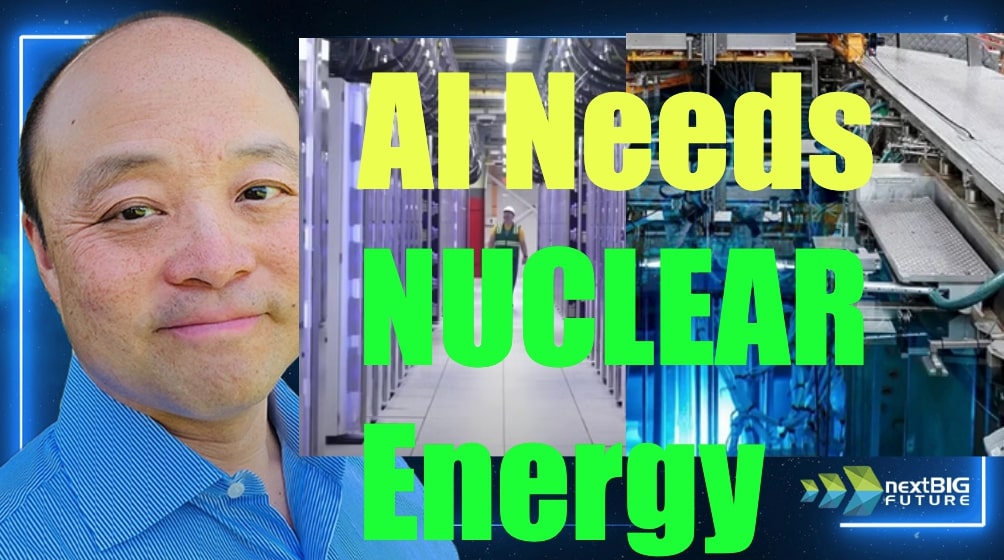Do AI Data Centers Really Need Nuclear Power?

The Resurgence of Nuclear Energy: Meeting the Power Demands of AI Data Centers
In recent years, the world has witnessed a rapid increase in the demand for energy, primarily driven by advancements in technology and the growing power requirements of artificial intelligence (AI) data centers. By 2030, these data centers are expected to require a staggering 150 gigawatts (GW) of energy annually, with a significant gap of 100 GW anticipated by 2028. This scenario necessitates an energy strategy that can keep pace with the soaring demands. One promising solution is the resurgence of nuclear energy, which is projected to play a pivotal role in filling this energy gap.
In the face of these challenges, the U.S. Department of Energy (DOE) has initiated a fast-track program aimed at expediting the development of nuclear technology. This initiative includes the support of 11 companies that are working on pilot reactors expected to achieve criticality by 2026. These advancements in nuclear fission technology could be instrumental in addressing the urgent energy demands created by the expanding AI landscape.
Nuclear Fission vs. Fossil Fuels: A Safer Alternative
Nuclear fission, particularly with the newer Generation III reactors, has been proven to be significantly safer than traditional fossil fuel sources such as coal and natural gas. Over the last 70 years, the nuclear industry has experienced only three major accidents, a stark contrast to the numerous disasters attributed to fossil fuels. This safety record, combined with the ability to generate large amounts of energy, makes nuclear fission a compelling option for meeting future energy demands.
Despite its advantages, nuclear energy must be distinguished from nuclear fusion, which remains largely experimental. Fusion technologies, such as those being developed by Helion Energy, aim to create a new source of energy by fusing atomic nuclei. While the potential of fusion is vast, it has yet to produce usable electricity and is not expected to contribute significantly to energy needs in the near future.
The Role of Startups in Nuclear Innovation
The landscape of nuclear energy is not solely dominated by established companies. Numerous startups are emerging, each bringing innovative ideas and technologies to the table. Notable players in this space include:
- Thorcon: Focused on building floating nuclear reactors.
- Copenhagen Atomics: Specializing in molten salt reactors.
- Oklo: Developing compact reactors designed for small grids.
- TerraPower: Backed by Bill Gates, this company is working on advanced reactor designs.
- Deep Fission: Aiming to enhance the efficiency of nuclear power generation.
These startups represent the innovative spirit of the nuclear sector, which is essential for addressing the pressing energy challenges posed by AI and other technologies. The combination of private investment and government support could accelerate the adoption of new nuclear technologies, ultimately leading to a more sustainable energy future.
The Global Race for Nuclear Energy: The U.S. vs. China
As the world races to meet energy demands, the United States finds itself lagging behind China in the construction of Generation III reactors. China has made significant strides in rapidly deploying nuclear technology, underscoring the urgency for the U.S. to catch up. This competition is not merely a matter of energy production; it also has implications for energy security, technological leadership, and climate change mitigation.
To bolster its nuclear capabilities, the U.S. must focus on streamlining the regulatory processes that govern reactor construction and operation. Enhanced collaboration between the government and private sector can facilitate faster deployment of nuclear technologies, ensuring that the country remains competitive in the global energy landscape.
Nuclear Energy: Complementing Renewable Sources
While nuclear energy presents a viable solution to the impending energy crisis, it is important to note that it will not displace renewable sources like solar and wind in the immediate future. The scaling challenges associated with nuclear power, particularly in terms of construction timelines and public acceptance, mean that it will coexist alongside other forms of energy generation for the foreseeable future.
Nuclear energy can play a crucial role in stabilizing the grid, especially as renewable sources become more prominent. The intermittent nature of solar and wind energy necessitates a reliable backup power source, and nuclear can provide that stability, ensuring a continuous supply of electricity even during periods of low renewable generation.
Uranium: The Key to Expanding Nuclear Energy
As nuclear energy becomes increasingly important in meeting global energy demands, the need for uranium—a primary fuel source for nuclear reactors—will also rise dramatically. The expansion of nuclear energy will require significant investments in uranium mining and processing to ensure a stable supply of this critical resource.
Moreover, the development of advanced reactors may lead to the utilization of alternative fuel sources, such as thorium, which can provide additional options for future energy production. This diversification could further enhance the sustainability and safety of nuclear energy.
Conclusion: The Future of Nuclear Energy in a Power-Hungry World
The resurgence of nuclear energy is not just a response to the growing demands of AI data centers; it represents a pivotal shift in how we think about energy production and consumption. As nations grapple with the complexities of climate change, energy security, and technological advancement, nuclear energy stands out as a viable, safe, and scalable solution.
In the coming years, the collaboration between governments, private sectors, and innovative startups will be vital in realizing the full potential of nuclear power. The world is at a crossroads, and the decisions made today regarding energy policy will have lasting impacts for generations to come. As we look toward the future, the question remains: how will we balance the need for rapid energy expansion with the imperative of sustainability? With the right approach, nuclear energy can be a cornerstone of our energy strategy, providing the power needed to fuel the advancements of tomorrow.
FAQs
What are Generation III reactors?
Generation III reactors are advanced nuclear reactors designed to improve safety, efficiency, and sustainability compared to earlier generations. They incorporate enhanced safety features and are suited for longer operational lifespans.
Why is nuclear energy considered safer than fossil fuels?
Nuclear energy has a far lower accident rate than fossil fuels. In over 70 years of operation, there have been only three major nuclear accidents, whereas fossil fuel disasters occur frequently, leading to significant environmental and health impacts.
Will nuclear energy replace renewable sources like solar and wind?
Nuclear energy is unlikely to replace renewable sources in the near future due to scaling challenges and public perception. Instead, it will likely complement renewables by providing a stable energy supply when renewable generation is low.
As we explore the future of energy production, the integration of nuclear power with renewable sources could redefine how we approach our energy needs. Are you ready for the energy revolution? #NuclearEnergy #AI #SustainableFuture
Published: 2025-08-17 01:37:40 | Category: Trump GNEWS Search



